The Pyrenees Mountains, so generously blessed with an air of mystery,
are home to an exceptionally mesmerizing walled city.
Dripping with history and tradition,
Villefranche-de-Conflent evokes a sense of timelessness.
This is deep France, solid as the rock it's built on.
This is Catalan France, an area of the Pyrenees-Orientales*,
abundantly endowed with rugged villages made of stone.
Most townships cling to a mountainside or lie deep inside a verdant green
valley but here, you get the opportunity to experience both.
*formerly called Roussillon as in Languedoc-Roussillon which is now re-named Occitanie
A remarkable example of both medieval and military architecture,
Villefranche-de-Conflent was founded in the 11th century.
The sheltered city, sitting at the foot of Mount Canigou, was reinforced by
famous military architect Vauban in the 17th Century.
You'll sense the soothing comfort of a warm security blanket
the minute you walk through its medieval gates.
Wrapped up by unyielding walls, you'll soon feel immune
to the distressing uncertainty of the real world.
Sturdy, enigmatic, and full of character, Villefranche-de-Conflent takes pride
for its reign on two important registries of must-see wonders of France:
UNESCO World Heritage Site and France's " Les Plus Beaux Villages,"
a two-for-one triumph, richly deserved.
Overlooking the village stands stalwart Fort Liberia on mountain terrain
designed to further secure the village compound.
The so-called Thousand Steps -- in fact, fewer than 800 if you're counting -- made
of local pink marble -- connects the village to the picturesque fort setting.
Why all the defensive frenzy in such a peaceful location?
A guarantee of protection was the preferred architecture of the day.
Consider medieval France and Spain -- rebellions against the nobility,
struggles at the top -- endless bickering between Church and State
while the masses suffered endlessly from hunger and disease....
Self-preservation was the name of the game.
Peace of mind was considered high end -- virtually the lap of luxury.
Today we associate luxury with toys like a Sub-Zero refrigerator or
high end services such as hiring a driver to take you to work.
But back in the day of fortress-cities, the chief ingredient of a
life well lived was simply reliably safe shelter.
During the middle ages, the best defense was not a good offense.
It was one part isolation and two parts impregnable walls.
Snug as a bug in a rug.
And that's exactly how you'll feel in Villefranche-de-Conflent.
simply by one name -- restored the medieval village to near perfection in 1680.
If the name seems familiar to you, it's because he created masterpieces of military strongholds throughout his long career including the fortification of
Villefranche-de-Conflent as added defense against the "new" weapon of cannon fire.
The old medieval walls were no longer strong enough to protect against cannon attack so Vauban brilliantly laid the groundwork for safekeeping the city.
A walk around the ramparts are one of the highlights of a visit to this city.
Vauban's most famous designs include Neuf-Brisach in Alsace,
the Citadelle in Lille and the walled town of Arras in the north.
His star-shaped fortifications are brilliant because he could mount cannon on the ramparts while leaving walls so clean the enemy couldn't find a place to hide.
Not far from Spain's border, Villefranche-de-Conflent belonged to Catalonia
at one time and much of the surrounding area has held fast
to its beloved Catalan Mountain Cuisine.
Cherished throughout both countries, the table is fresh, colorful and full of flavor.
The earthy cuisine includes favorites such as cargolade -- fresh snails,
pork sausages and lamb chops grilled over vine clippings as well as
one of my favorite desserts of all time -- crème catalane -- a kissing
cousin of crème brulée that's typically made with flavors
such as lemon, orange and cinnamon or wild fennel.
Spanish ham and small plates rule this part of France.
Cuisine with character! Delicious!
a joyride on its famous little yellow train - Le Petit Train Jaune.
Talk about the Little Train that Could!
This one, originating in Villefranche-de-Conflent,
rises to an altitude of over 5000 meters above sea level.
Service began in 1903; no doubt the views haven't changed much since then.
If trains aren't your "thing", consider a visit to a local cave.
The Grotte des Grandes Canalettes offer a dazzling look at a
petrified natural hideaway in the mountain.
we visit France year after year.
Villefranche-de-Conflent gives you a worthy taste of all three,
with the added bonus of the area's natural beauty.
From rue Saint-Jean to the Eglise St-Jacques, you'll be treated
to the charms only a small town like this can offer.
Pink marble, 13th and 14th century manor houses, a Spanish-flavored chapel, ramparts, and local boutiques make for a big impression in such a small place.
And to top it all off, you're in the French Pyrenees,
one of the most beautiful spots on the planet.
If you relish sunshine and a generous dose of the dramatic,
please don't miss a chance to see this part of France.
Villefranche-de-Conflent is a wonderland -- a timeless picture of authentic France,
gift-wrapped especially for those of us who live for true-to-life travel.
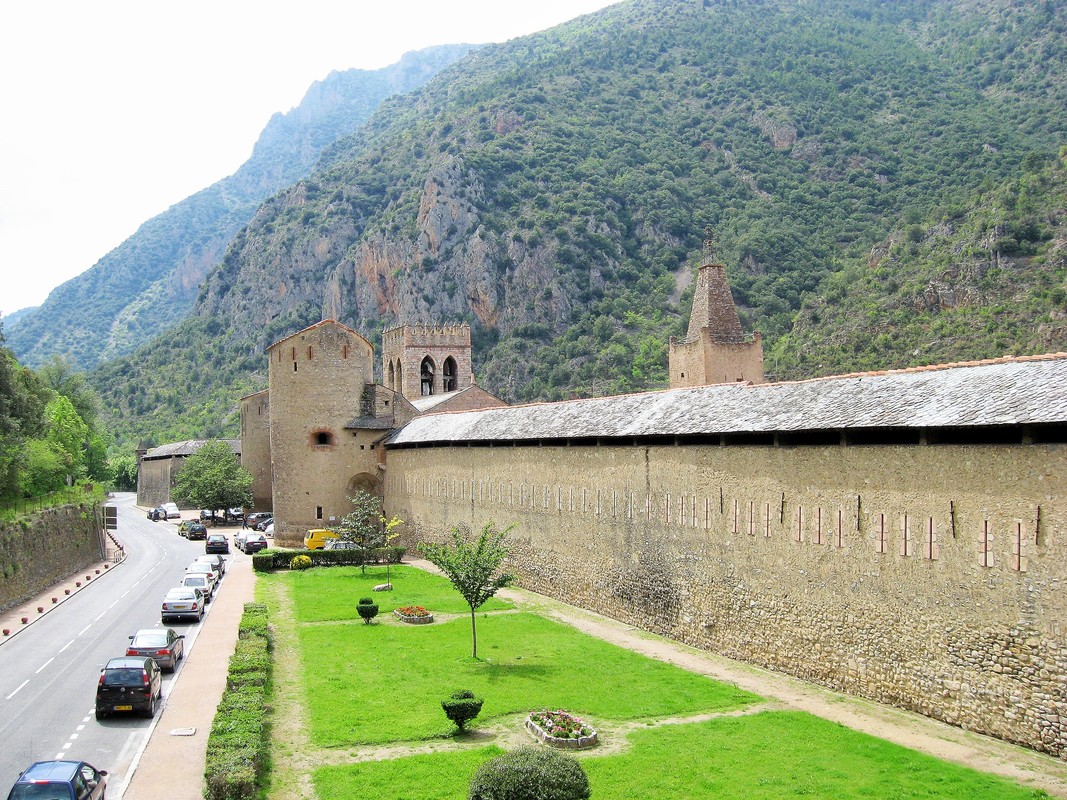

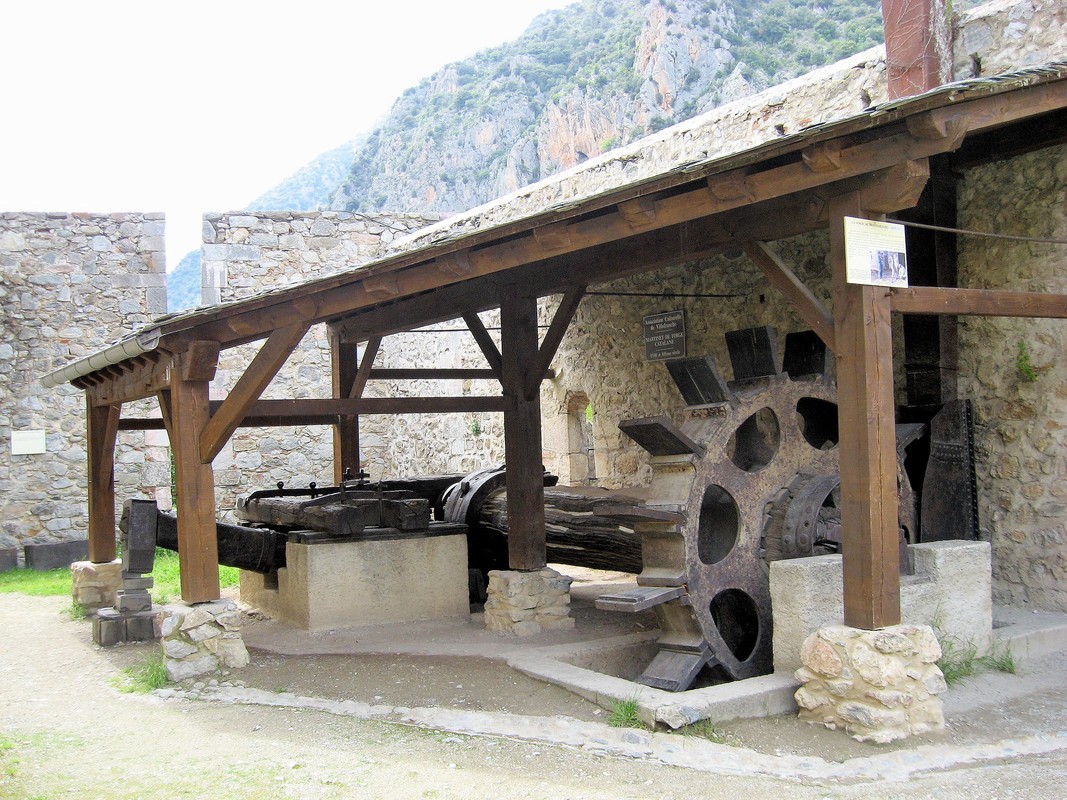



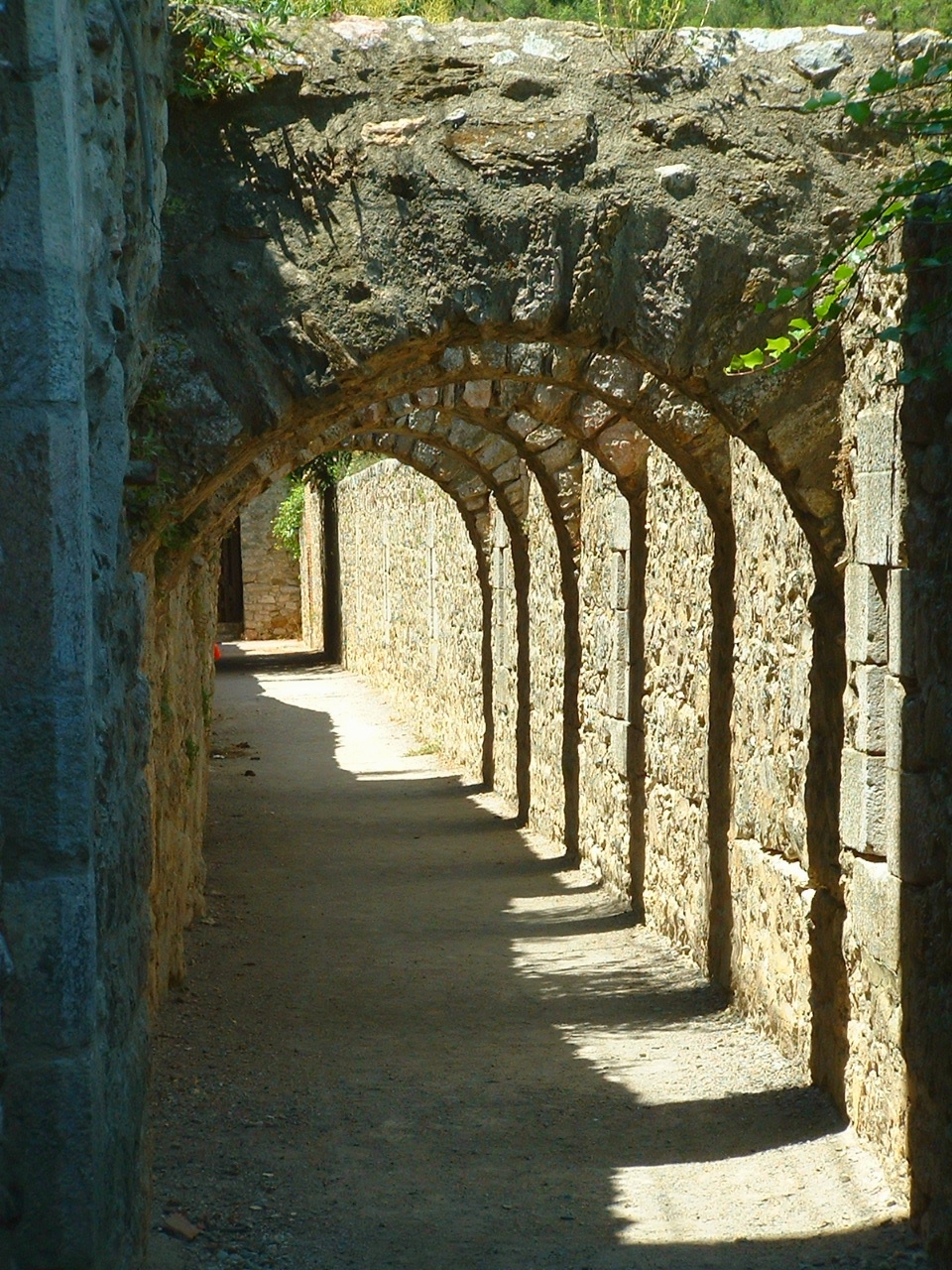



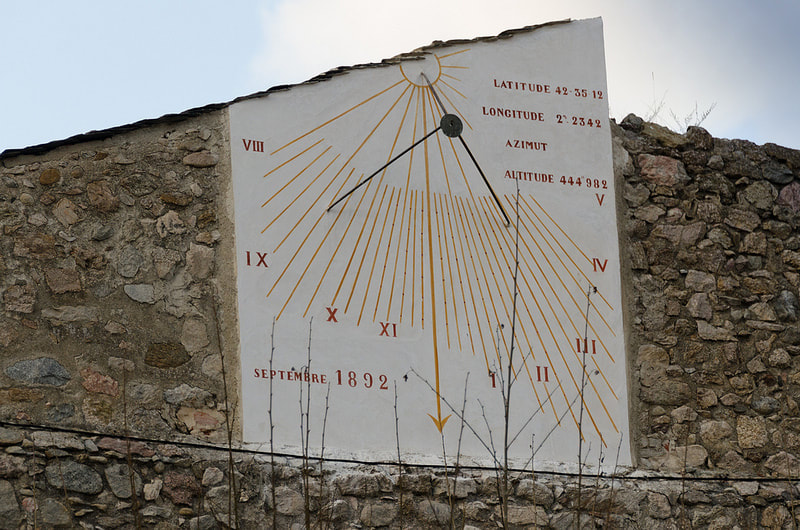

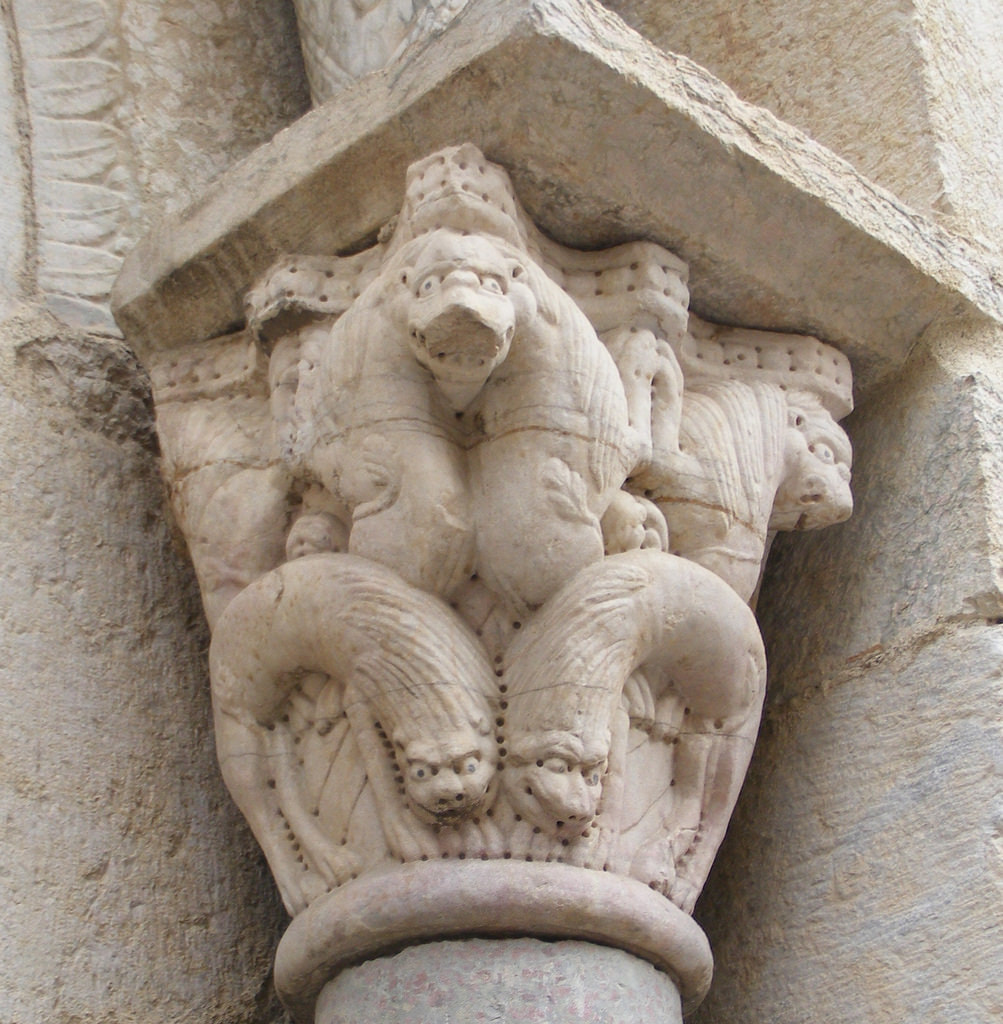
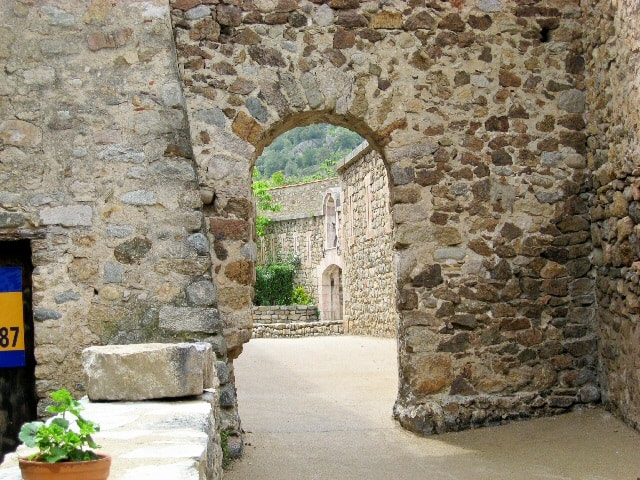


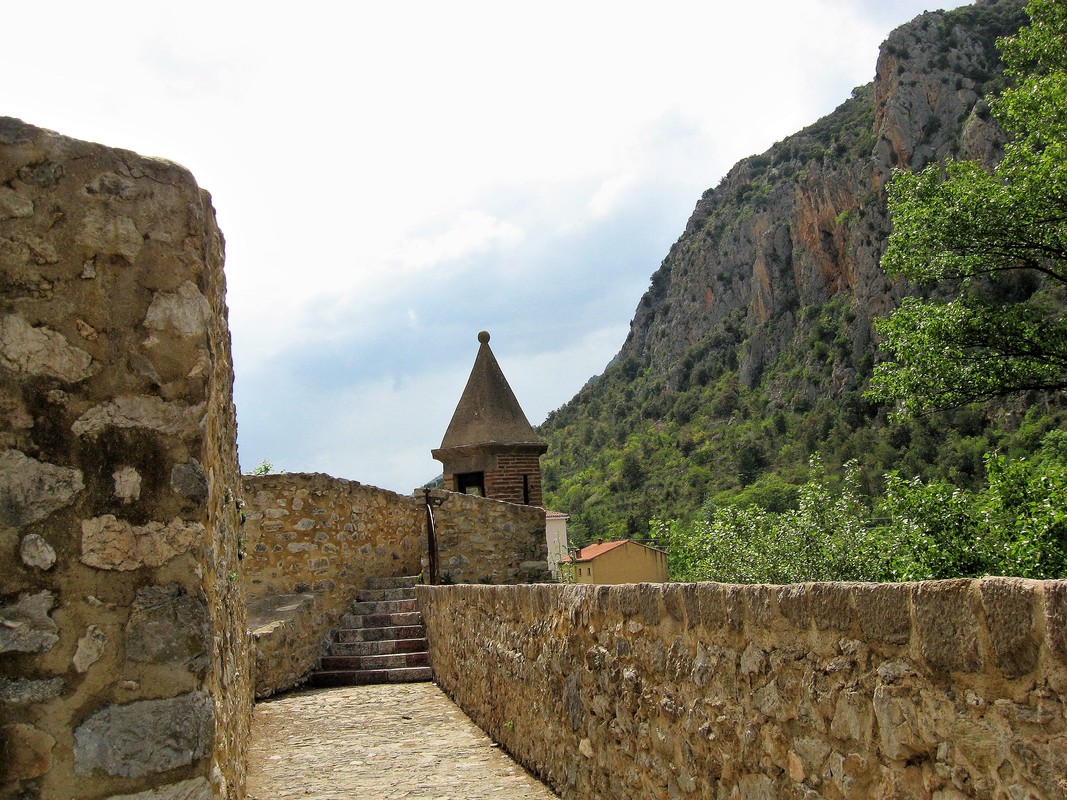
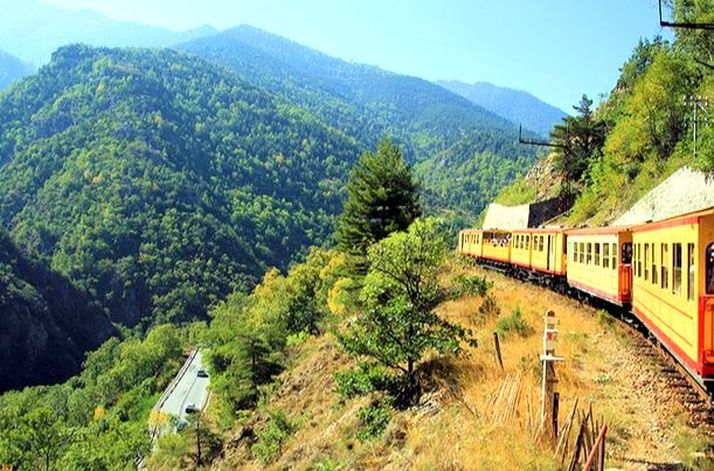
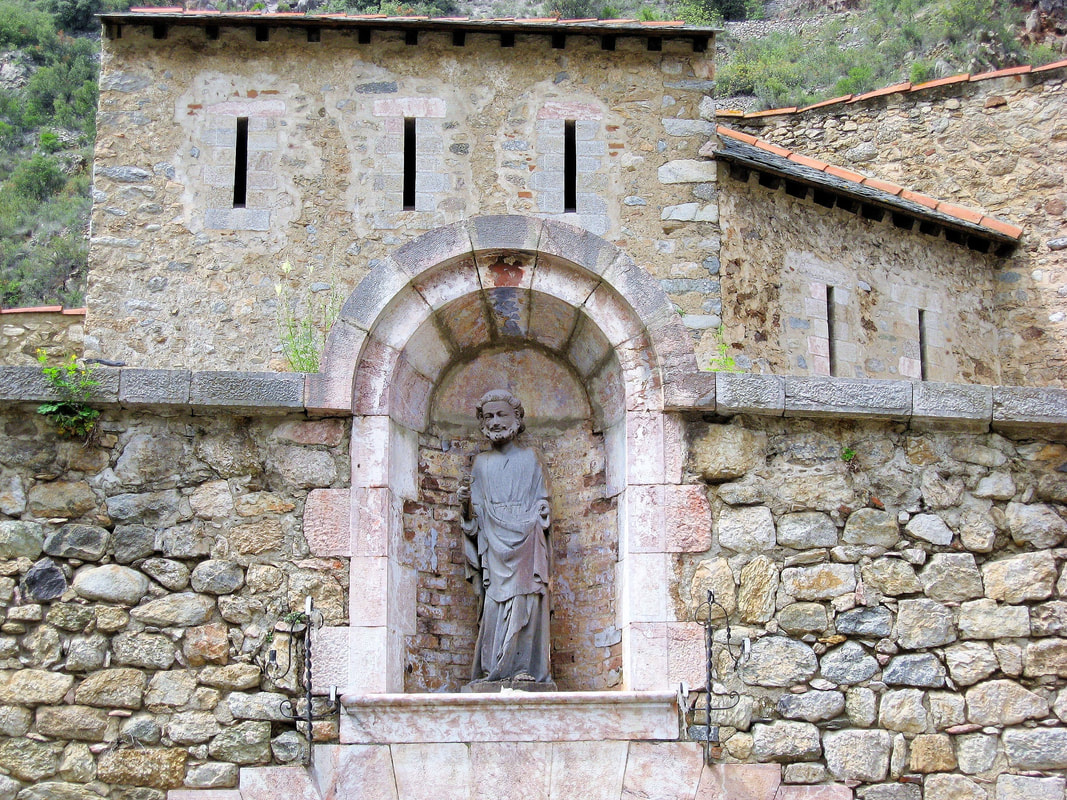

 RSS Feed
RSS Feed
